 |
Hempstead |
|
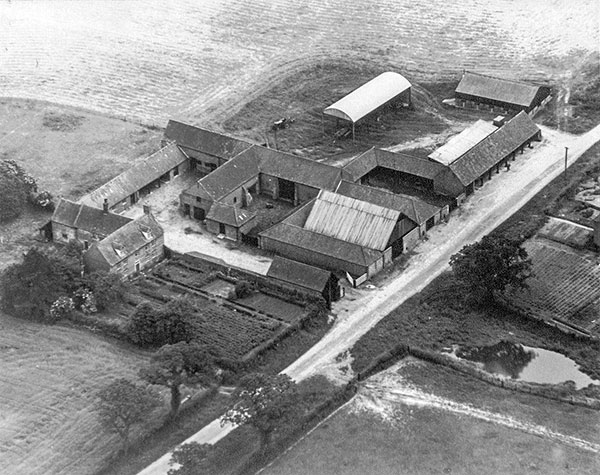 |
c.1963 |
Hole Farm and Church Farm were worked together by different families for some two centuries. The Britiffes provide a classic example of a successful 17th and 18th Century family constantly improving their financial and social position. The first Edmund Britiffe was a yeoman and had no arms on his tomb. By the time his son died the family had duly acquired a grant of arms. It was, however, the third known generation who prospered most. The third Edmund became the owner not only of Church_Farm Hempstead but also of extensive lands in Hunworth, Stody and Edgefield. It was this Edmund who rebuilt Hunworth Hall with its newly fashionable Dutch gables completed in 1699. Across the road on the gable of the ball appear the initials “ERB 1700'' and two hearts which stands for Edmund and Rebecca. |
House, C18. Brick, coursed flint to rear, pantile roof. L plan, 2 storeys with attic and cellar. 3 bays, five windows. Flint plinth, brick platband, dentil cornice. Gable end internal stacks. Windows and door of 1985 duplicate those previously existing. Central 4 panelled door with rectangular fan light; door and ground floor windows under segmental arches. 2 gabled roof dormers with barge boards supported by brackets. Windows grouped 2:1:2. All windows 2-light casements with transoms and glazing bars. Both gables rendered, gable parapets; eaves course platband. Rear wing with central axial stack and changed fenestration. Interior: roof said to be butt purlined with wind braces; chamfered beams with ogee stops to front range; one reeded fire surround. |
Since 1982, about 40,000 trees and 12,500 shrubs have been planted on 60 acres of new plantations and alongside 8 miles of hedges. |
It is also of interest here to refer to the smugglers route inland affecting both Pit Farm and Hole Farm. There is to this day a minor lane from Weybourne, up the hill to Bodham, from Bodham, past ''the castle”, to the Hare and Hounds and Pit Farm and then via Slushy Lane to Hole Farm. From Hole Farm there were plenty of routes inland, the physical situation being similar to that of Smokers Hole. |
Robert Britiffe went to Gresham's School in 1676 being described as “Robert Brightiffe son of Edmund Brightiffe Gent of Baconsthorpe,'' He went on to Caius College, Cambridge. His first wife was Judith (daughter of Henry Edgar of Eye) who died young and is buried at Baconsthorpe Church, leaving him one child only, a daughter also called Judith. Robert was called to the Bar by the Middle Temple in 1682. In NRS 14801 29E1 there is a contract between the two brothers described as then being “of Baconsthorpe'' buying, in 1704, land in Hempstead, adjoining land already owned by them, from William Newman the Lord of the Manor. Robert went into public life becoming both Recorder of Norwich (1704-1730) and MP for Norwich. He became the confidant and lawyer to Sir Robert Walpole (who built up a huge estate at Houghton, owned the finest non royal collection of pictures in the country and started building Houghton Hall in 1721). Robert married off his daughter by his first marriage Judith in 1717 to young Sir John Hobart bringing with her a dowry of £15,000 which it is said together with her share of her father's estate effectively preserved the Blickling estate for her descendants. Sir John's sister, Henrietta, was married to the Earl of Suffolk but flourished more publicly at the Court of George II as mistress of the Prince of Wales where her influence was such that she obtained a peerage for her younger brother John and later an earldom - that of Buckinghamshire. |
It was late in his life that Robert Britiffe bought what is now Hole Farm which adjoined both Pit Farm and Church Farm. This he did in 1744 when he was aged 83. The proof of title for the sale shows the previous owners as follows- One Part Elizabeth requested that William Riches of Barningham Parva should do the farming. On Ursula's death these lands were to pass to Martha and Sarah Flaxman, the daughters of Ursula - by what must have been Ursula's second marriage. William Riches was Elizabeth's sole executor. There must have been a cousin alive since if the children of Ursula failed to have issue the lands were to go to Christopher Brettingham, presumably the son of Elizabeth's brother, John Brettingham. 1744 1749 |
For the sixty years following Robert Britiffe's death nothing more is known of the history of Hole and Church_Farms. His grandson, the Second Earl of Buckinghamshire, died in 1793 and the estate passed to his daughter Caroline, who married William Assheton Harbord (a cousin who became Lord Suffield in 1810 and died in 1821). No doubt Robert Britiffe, despite his own modesty, would have been proud had he survived to see the great pyramidal mausoleum designed by Bonomi for his grandson’s monument in Blickling Park. In NRO 14628 29 DI there is a bundle of papers prepared and signed by Mr Benjamin Whitney, who seems to have been Colonel Harbord's Agent at Blickling. Mr Thomas Rump of Church_Farm was then tenant of 163 acres. There were 134 acres of arable land and 29 acres of buildings and meadows. The meadows were “of coarse quality''. There were three cottages, each being described as being ''one cottage with two tenements''. Whitney in August 1809 reckoned the whole to be worth £228.pa. “9th August 1809. This farm and the one occupied by this tenants brother to be measured, they both expire at Mich's 1810”. This bundle of papers is the first evidence of the Blickling Estate's active involvement in Hempstead. The reference to “ponds'' in the plural in relation to Pond Hills must show that the pond below the road (where a hefty bank can be seen to this day) was then in existence. And what were the ponds for? Fishing? Or storing water for some sort of mill? After this date any maps of the area only show the pond which still exists. At the Norwich Record Office (NRS21406) there is a delightful 1824 map of the Pond Hills area by Mr Funnel of Stody. The pond is shown as an exact square (like a medieval fish pond) and the cottage is called “Pond House''. The roadway, passing this house towards the east (and which comes out at the north-east corner of Pond Hills Woods) then went straight across the Hole Farm field to the corner where the Baconsthorpe road and the Plumstead road part company. All the Hole Farm land which appears on the map is shown as being owned by Lady Suffield and occupied by ''Mr Johnson”. Also included is a letter dated January 10th 1824 from Mr Funnel to Lady Suffield enclosing the map and telling her what the various letters on the map represented, where she entered the wood, where she met somebody, where she moved onto land occupied by another tenant, etc. It sounds as though this must have been Lady Suffield’s first visit to Pond Hills (coming as it did only three years after her husband's death) because Mr Funnel writes that he will make a “more perfect plan” after “her Ladyship shall have made such alterations and improvements as your ladyship shall think proper”. Lady Suffield is already shown in the 1815 Edgefield Enclosure Award Map as owning adjoining land to the south, and indeed she had owned all this land since the death of her father in 1793, so it does seem odd that she had never previously visited Pond Hills. Running through Pond Hills are some gravelled and well graded roadways with all the appearance of being carriage drives. Adjoining them are many splendid oaks and beeches and a fine Wellingtonia. Oaks grow slowly in Norfolk. Those farming the belt to the south of the Pond Hills were planted at the time of the Crimean War and when one was cut down in the nineties this dating was confirmed by the number of rings. The Pond Hills oaks are appreciably larger than those in the belt and hence it seems more likely that not that they were planted by Lady Suffield in the 1820s and that she was responsible for the carriage drives. It was, after all, the date of the craze for the “Picturesque'' and Humphrey Repton was producing his Red Books of many of the neighbouring estates. |
In 1824 Mr Johnson was the tenant of Hole Farm. By 1841 William Bird was tenant and with his sister lived at “Hole House'' (White's Norfolk Directory 1845). The map on the 1841 Tithe Map shows that the field to the west of Slushy Lane, later to be used for brickmaking, was already called “Brick Kiln Close”. The 1851 Census shows William Bird farming 350 acres and employing eleven labourers and two boys. Richard Mack succeeded but in the early 1880s he moved to Plumstead Hall Farm and was succeeded as tenant by Mr John Hagen from Aylsham in 1884. The Blickling Estate was by now once again managed by a widow, Lady Constance Lothian. At the NRO (MC3/551-515x4) there is the builder's estimate for a major rebuilding plan seemingly involving the virtual reconstruction of all the farm buildings at Hole Farm in the form in which it survived until 1990. There is no evidence that any money was spent on the farmhouse. ln his booklet “Norfolk Landowners since 1880” Paul Barnes wrote about the appalling consequences of the agricultural depression of the eighteen seventies onwards, saying that many farms were abandoned by their tenants and “prospective tenants were able virtually to dictate their own terms for taking on farms at favourable rents”. It is therefore no coincidence that in the Parish of Hempstead the Blickling Estate made a huge investment at Hole Farm in 1884, Mr John Mott rebuilt the farmhouse at Beckett’s_Farm in 1885, and the Gurneys rebuilt Hempstead_Hall_Farm on a grand scale in l883. Mr John Alfred Hagen, later of Four Elms, Hempstead, was born at Hole Farm in 1910. ln 1933 in order to raise the Estate Duty payable following the death of the 10th Marquis of Lothian, the Hempstead and Stody Estate was sold to Lord Rothermere, the founder of The Daily Mail. The forced sale of (inter alia) Hole Farm and Church_Farm had an interesting result in that it encouraged the 11th Marquis of Lothian (who was an active Liberal politician) to consider carefully the whole question of the breaking up of old estates, the selling off of historic houses and their valuable contents (the wonderful original library at Blickling having been broken up in a big sale in 1932 to fund the self-same death duties). |
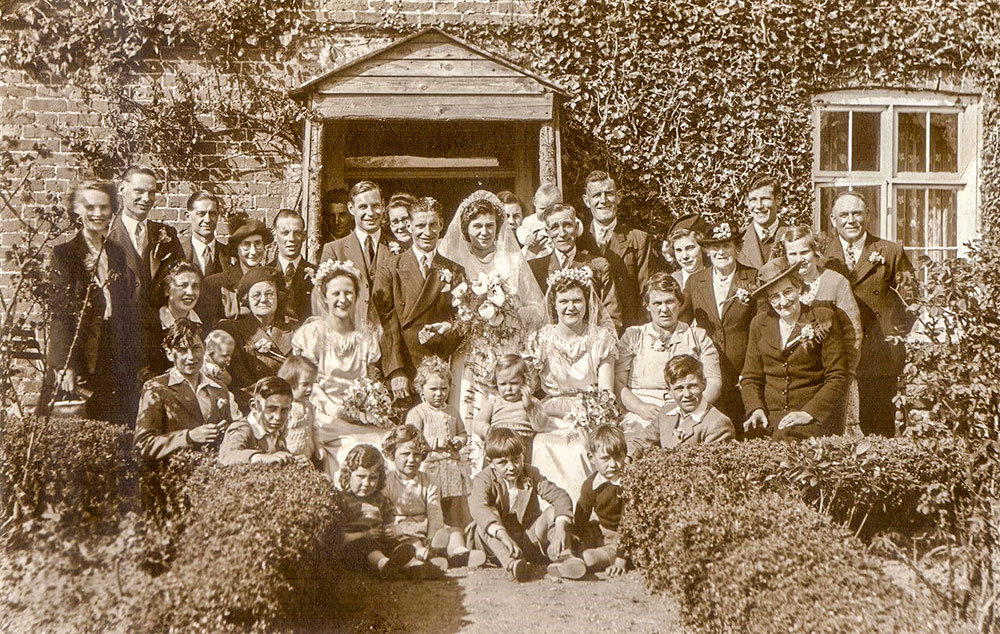 |
Wedding party outside Hole Farmhouse in 1949 The marriage was between David Lubock and June Baker At that time the Baker family were living in Hole Farmhouse |
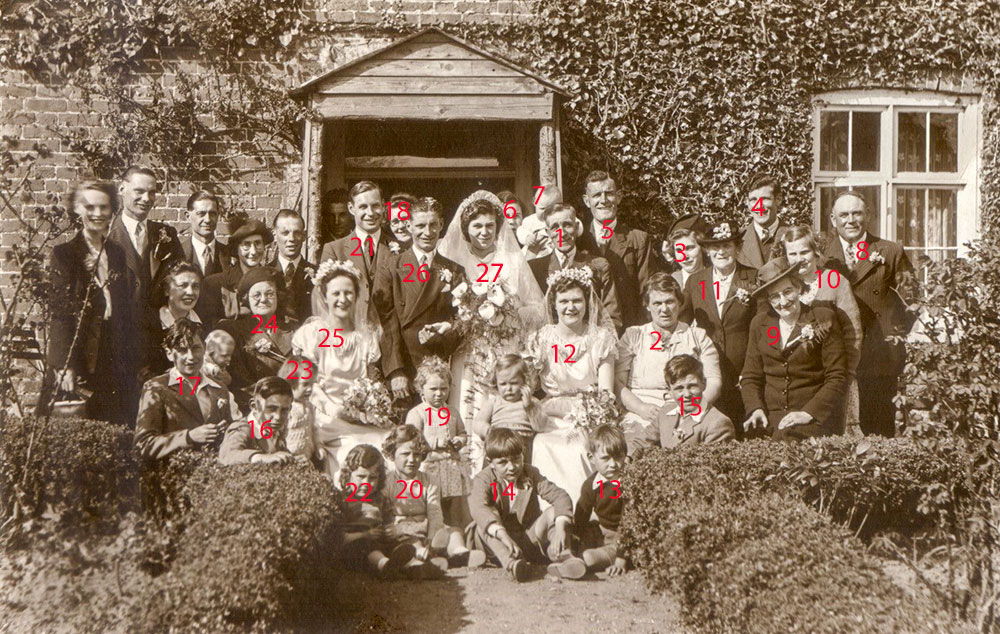 |
1 - Reginald Baker; 2 - Elizabeth Baker; 3 - Esme Wisken who married 4 - Richard Baker in 1951; 5 - John Holland; 6 - Doreen Holland (née Baker); 7 - Baby Holland; 8 - Mr. Roberts (uncle); 9 - Mrs. Roberts (aunt); 10 - Margaret Holland (cousin) 11 - Aunt Ginny; 12 - Daphne Baker; 13 - Terry Baker; 14 - Fred Baker; 15 - Regi Baker; 16 - Leslie Baker; 17 - Geoff Baker; 18 - Sylvia Knights (née Baker); 19 - Pat Knights; 20 - Diane Knights; 21 - John Knights; 22 - Miss Holland; 23 - Miss Holland; 24 - Mrs Lubock (groom's mother); 25 - Groom's sister; 26 - David Lubock (groom); 27 - June Baker (bride) All others are David Lubock's brothers and partners |
Reggie and Elizabeth Baker had six sons and five daughters |
In 1935 Mr John Hagen died at Hole Farm and his Obituary, headed “Hempstead's Grand Old Man'', was duly published: He was a noted grazier and his fat beasts were far-famed. As a master he was truly one of the best. A great believer in setting a personal example to his men, he took his place with them at their work, and never asked them to do anything he could not do himself. Mr. Hagen was a wonderful judge of cattle. He could judge a bullock's weight to a pound or so, and at market he was a great friend to many farmers who sought his much-valued advice when purchasing stock. Although taking no part in hunting or any other sport, he was always pleased to have the North Norfolk Harriers over his land and gave them all possible facilities and a hearty welcome. |
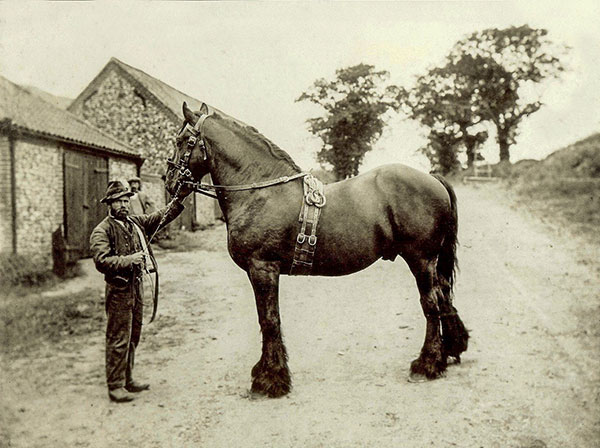 |
Head Man, William Fowle (with John Hagen? standing behind) on the road outside Hole Farm c.1920 William Fowle lived in Pond Hills Cottages |
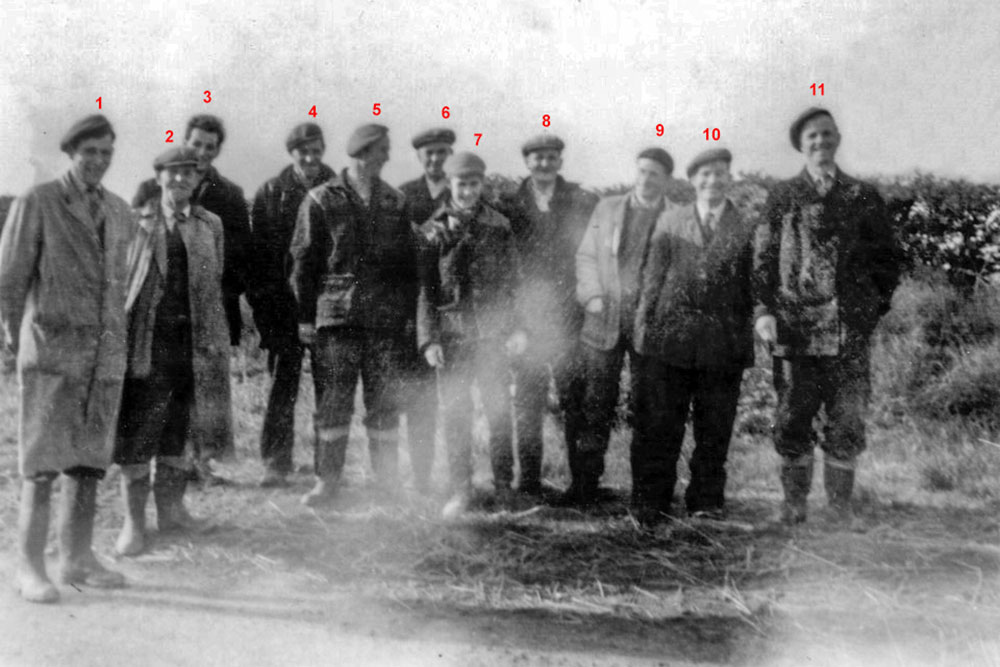 |
Hole Farm workmen - 1962 1 - Richard Baker (married to Esme Baker); 2 - Unknown; 3 - Peter Turner; 4 - Albert Wisken (Esme Baker's brother); 5 - Henry Holman; 6 - Unknown; 7 - Billy Newstead; 8 - D. Clarke; 9 - Unknown; 10 - Gordon Burrell; 11 - Albert Chestney |
Following Mr John Hagen's death Lord Rothermere’s accountant, Mr James Wilson, came to live at Hole Farm. Mr Jim Wilson, a son of Mr James Wilson, grew up at the farm and remembers Hole Farm accommodating a flock of ''several hundred traditional Norfolk Black Turkeys.” He also remembers visits by Lord Rothermere resulting in tips of 2/6d. During the 1939/45 war the family slept in the cellar when there were raids, there was a search-light in the meadow in front of the house and “poles with wires stretched between them were erected in the largest fields to deter German troops landing by gliders.'' Lord Rothermere built the farm cottage by the pond at Hole Farm and planted larches in Pond Hills between Mr Johnston’s marlpit (see Lady Suffield's Visit) and the road. It was at Stody that he built the present Stody Lodge on a new site and built many other homes and estate cottages. He planted the wood adjoining the Barningham Estate known as ''Devil's Own'' on the site of a sand pit. |
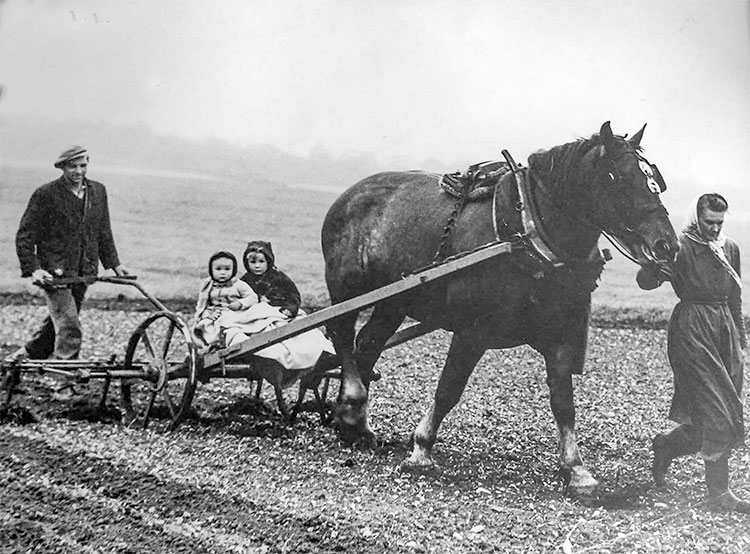 |
Wisken family hoeing at Hole Farm c.1957 (Albert) Ted Wisken guiding the hoe; Jean Wisken with the horse; Paul and David Wisken sitting on the hoe |
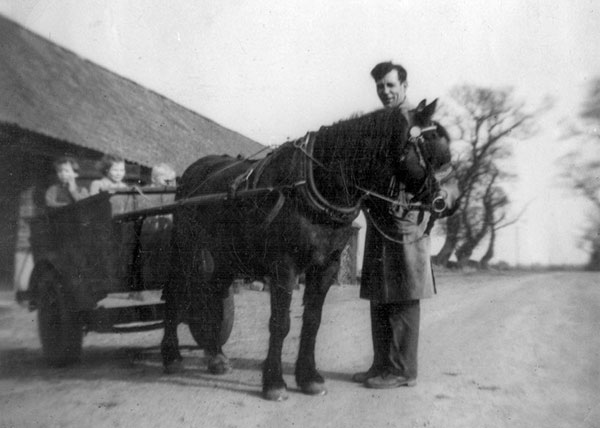 |
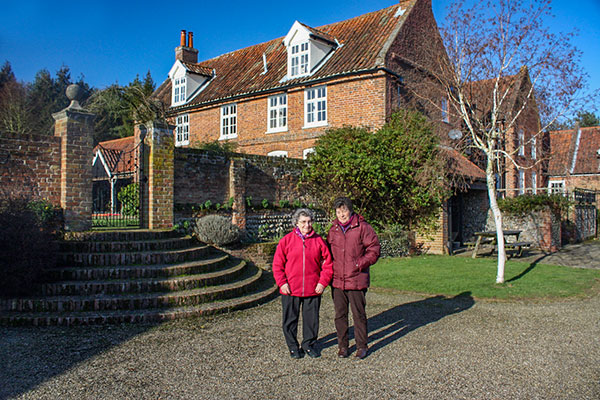 |
Richard Baker holding Tiny the pony on the road outside Hole Farm - 1959 In the cart - son, Alan Baker (left), daughter Gloria Sillis, née Baker (centre) Alan Holman, (right) friend, living opposite the farm |
Esme Baker (married to Richard) with daughter Gloria - 2nd February 2012 Gloria was born in the 1st floor room with the nearest window above their heads |
It was in October 1964 that Mr David Johnson bought Hole Farm (317 acres) and Church_Farm (134 acres). |
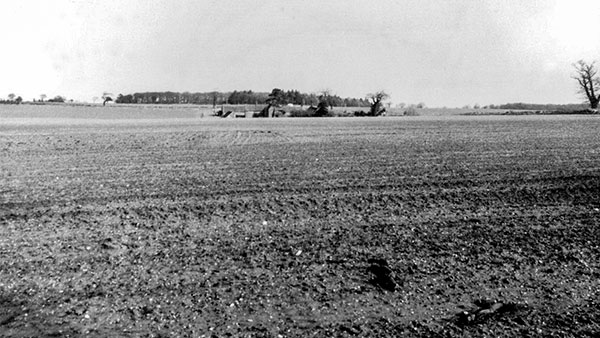 |
Hedgeless farming - 1982 Hole Farm sits in the dip top centre |
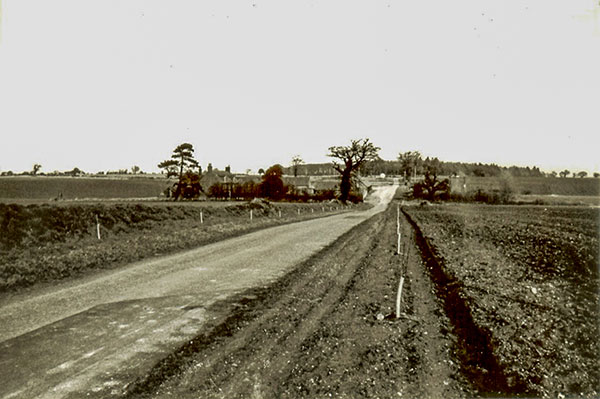 |
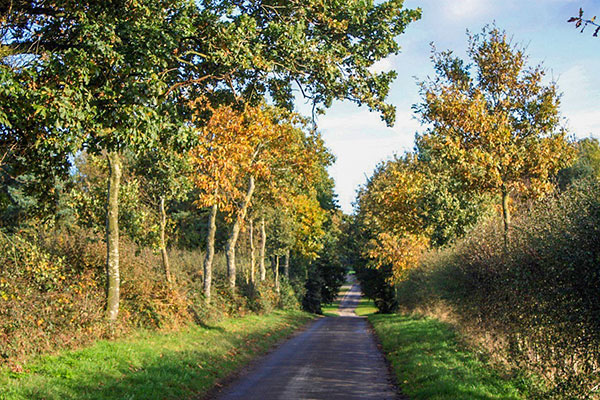 |
Start of hedge planting by Robin & Rose Carver - 1982 |
Similar view in 2012 |
In 1982 the Carver family bought the two farms. They built a large grainstore and spent the next fifteen years replanting the trees and hedges (but in different positions) that Mr Johnson had removed. The two cottages and the Church_Farm Barn on the Pond Hills Road were sold off - the former were converted from two small cottages into one fine house, while the Barn was also very well converted into two substantial houses. |
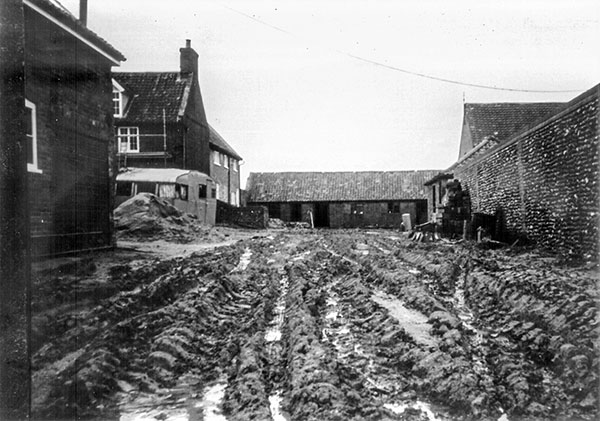 |
Hole Farm farmyard - 1983 |
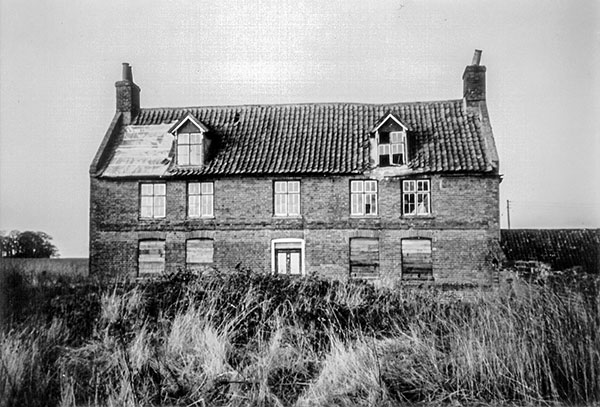 |
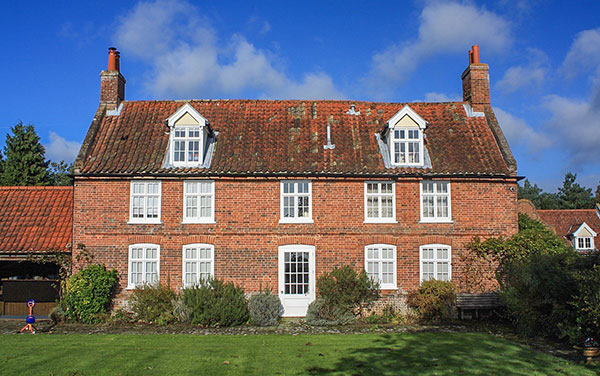 |
Hole Farm farmhouse - c.1980 |
Hole Farm farmhouse, a Grade II listed building - 1993 |
Very impressed by the Hempstead web-site which you have put on the internet. I see that I am quoted in the section on Hole Farm from information I gave to Robin Carver a number of years ago. I am the younger son of James Wilson. Lord Rothermere offered my father the tenancy of Hole Farm in 1938. My Dad had previously worked as an accountant for Rothermere in London. When Rothermere left for America in 1939, and subsequently died in 1940, my father took over as agent for the Stody Estate, continuing in that role when the estate was bought by George Knight. My family and I lived at Hole Farm throughout the War, moving to Holt in 1945. In fact Jimmy Clarke, Rothermere’s personal Secretary took over as mine host at the Feathers in Holt when Rothermere died. |
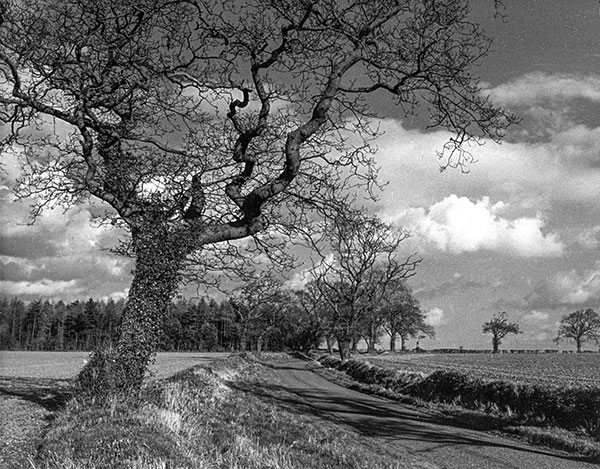 |
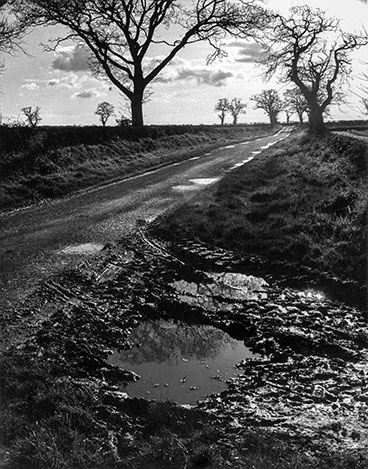 |
School Lane looking west towards the junction (half a mile distant) leading to Hole Farm - c.1974 |
School Lane looking south towards the junction leading to Hole Farm - c.1974 |
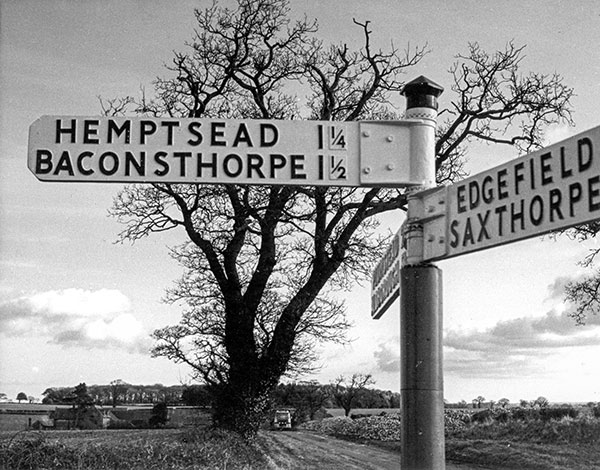 |
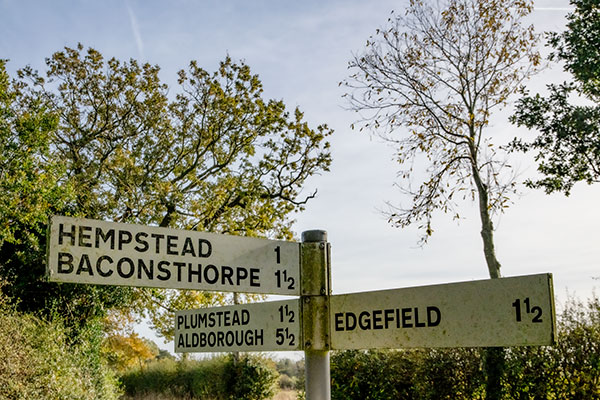 |
Signpost spelling error at the junction to the west of Hole Farm - c.1975 |
Correct spelling but apparently a quarter of a mile nearer - 7th November 2021 |
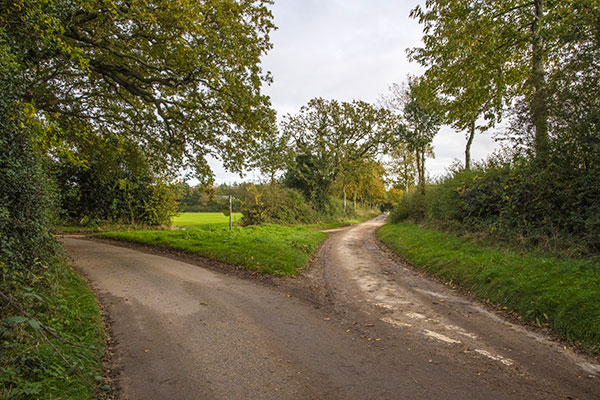 |
School Lane junction to the west of Hole Farm - 7th November 2021 |
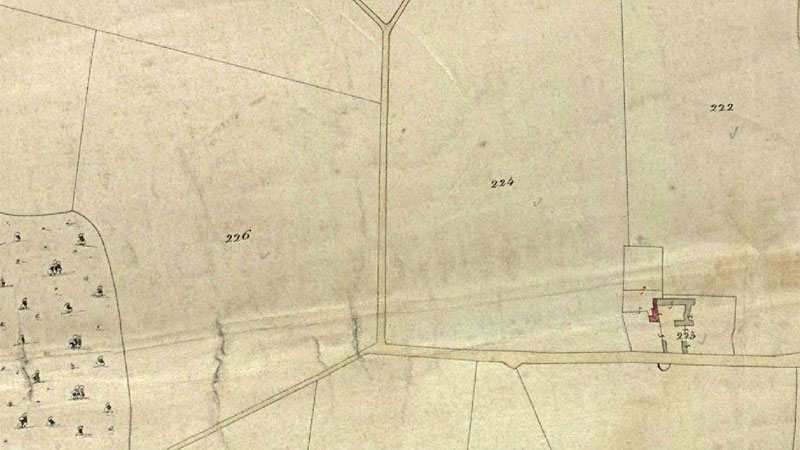 |
Tithe map c.1840 Courtesy of Historic Maps Norfolk |
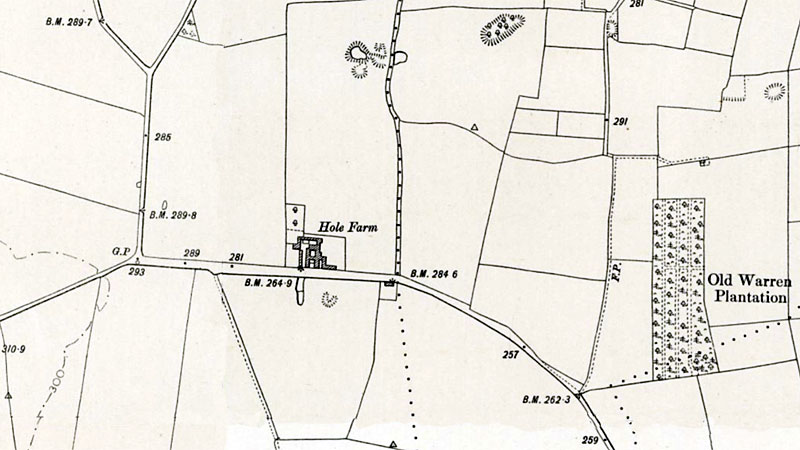 |
O. S. Map 1905 Courtesy of NLS map images |
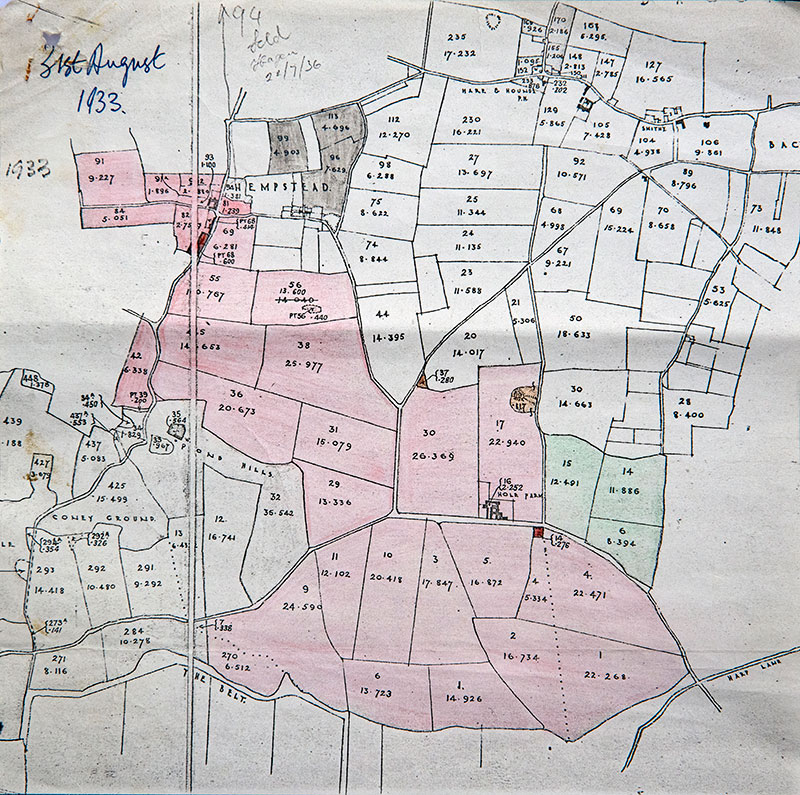 |
Map of Church Farm and Hole Farm combined land showing acreages as sold to Henry Robert Johnson & Litcol Estates Ltd 31st August 1933 |
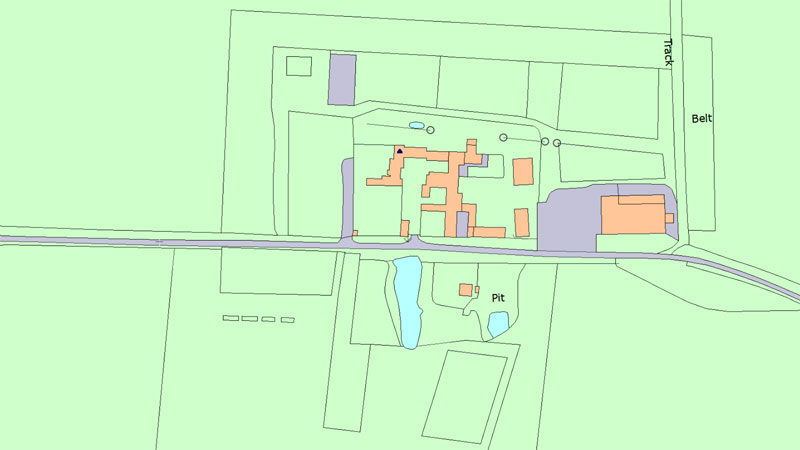 |
O. S. Map November 2023 Courtesy of Historic England map images |
| 1663: Elizabeth Worts, daughter of Thomas Barn, was admitted to part of the land. 1728: William Worts, as son of Elizabeth Worts, admitted to the land
1733: William Riches of Barningham Parva farming the land 1744: Robert Britiffe, aged 83 bought the farm along with Pit Farm at Baconsthorpe for £610 1749: Robert Britiffe died aged 89 and his grandson, the second Earl of Buckinghamshire inherited 1793: Lady Caroline Suffield inherited on death of John, second Earl of Buckinghamshire 1809: John Rump, tenant farmer and brother of Thomas Rump, tenant of Church Farm 1810: Stephen Storey, tenant farmer 1824: Mr Johnstone took over the tenancy Census 1841: William Bird (30) Farmer 1841: William Bird, tenant farmer living with his sister at Hole House; Lady Suffield, owner Census 1851: William Bird (42) Farmer of 350 acres employing 11 labourers, 2 boys
|
If you have any memories, anecdotes or photos please let us know and we may be able to use them to update the site. Please
or telephone 07836 675369 |
Website copyright © Jonathan Neville 2020 |